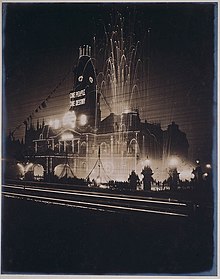
Back اتحاد أستراليا Arabic Federación de Australia Spanish فدراسیون استرالیا Persian Fédération de l'Australie French איחוד אוסטרליה HE Federazione dell'Australia Italian Austrālijas federalizēšana Latvian/Lettish Persekutuan Australia Malay Federalizacja Australii Polish Federação da Austrália Portuguese
This article needs additional citations for verification. (July 2020) |

| This article is part of a series on the |
| History of Australia |
|---|
|
|
The Federation of Australia was the process by which the six separate British self-governing colonies of Queensland, New South Wales, Victoria, Tasmania, South Australia (which also governed what is now the Northern Territory), and Western Australia agreed to unite and form the Commonwealth of Australia, establishing a system of federalism in Australia. The colonies of Fiji and New Zealand were originally part of this process, but they decided not to join the federation.[1] Following federation, the six colonies that united to form the Commonwealth of Australia as states kept the systems of government (and the bicameral legislatures) that they had developed as separate colonies, but they also agreed to have a federal government that was responsible for matters concerning the whole nation. When the Constitution of Australia came into force, on 1 January 1901, the colonies collectively became states of the Commonwealth of Australia.
The efforts to bring about federation in the mid-19th century were dogged by the lack of popular support for the movement. A number of conventions were held during the 1890s to develop a constitution for the Commonwealth. Sir Henry Parkes, Premier of the Colony of New South Wales, was instrumental in this process. Sir Edmund Barton, second only to Parkes in the length of his commitment to the federation cause, was the caretaker Prime Minister of Australia at the inaugural national election in March 1901. The election returned Barton as prime minister, though without a majority.
The main economic manifestation of federation was an Australian customs and fiscal union.[2] Although the customs union entailed a high external tariff on imports from outside of Australia, there was the elimination of tariffs on interstate Australian trade, and the net effect of federation on welfare was positive, insofar as trade policy was concerned.[3]
This period has lent its name to an architectural style prevalent in Australia at that time, known as Federation architecture, or Federation style.
- ^ "Fiji and Australian Federation. – (From the Herald's own Correspondent.) Melbourne, Monday". The Maitland Mercury and Hunter River General Advertiser. 25 October 1883. Retrieved 5 May 2016.
- ^ Lloyd, Peter (June 2015). "Customs Union and Fiscal Union in Australia at Federation". Economic Record. 91 (293): 155–171. doi:10.1111/1475-4932.12167. S2CID 153972430.
- ^ Varian, Brian D.; Grayson, Luke H. (March 2024). "Economic Aspects of Australian Federation: Trade Restrictiveness and Welfare Effects in the Colonies and the Commonwealth, 1900-3". Economic Record. 100 (328): 74–100. doi:10.1111/1475-4932.12790.
© MMXXIII Rich X Search. We shall prevail. All rights reserved. Rich X Search